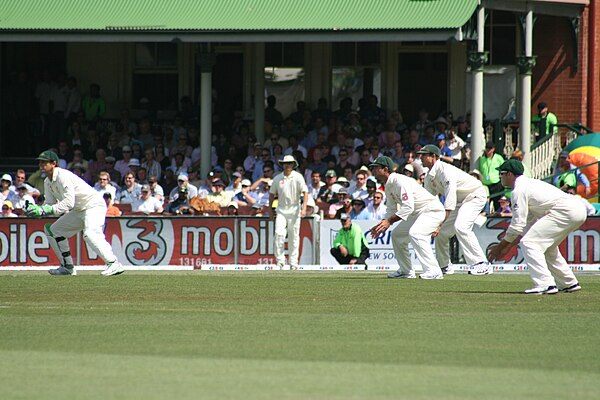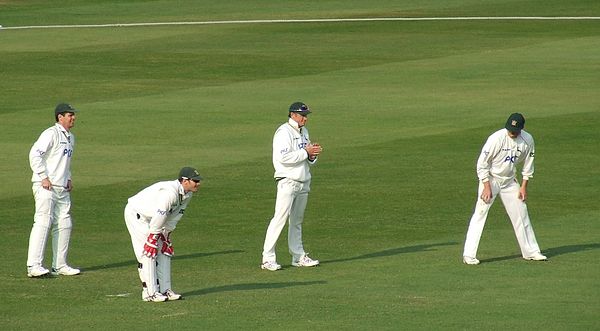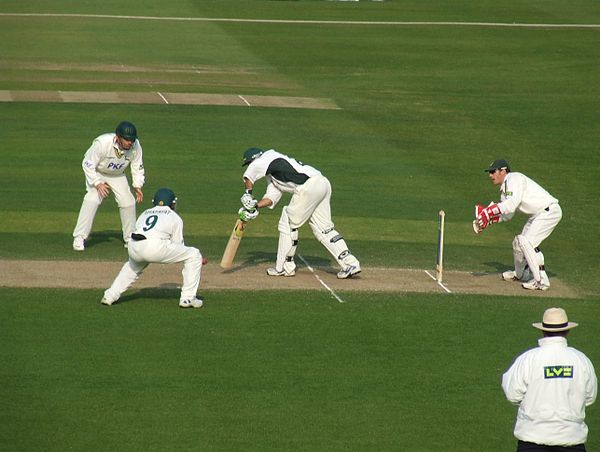Slip (cricket)
Videos
Page
In cricket, a slip fielder is placed behind the batsman on the off side of the field. They are placed with the aim of catching an edged ball which is beyond the wicket-keeper's reach. Many teams employ two or three slips. A floating slip is sometimes employed, usually in limited over games, who patrols an area in the slip cordon that would ordinarily be occupied by more than one fielder. The slip cordon's distance from the batsman increases with the pace of the bowler; generally they will be marginally further away from the batsman than the wicket-keeper is. Because of the resulting geometry, spin bowlers generally have fewer slips in the cordon than a fast bowler would in an equivalent game situation.
As fielding in the slips requires quick reflexes and sure hands, usually the most adept catchers in the team will make up the slip cordon. Most slip fielders are top order batsmen. Specialist slip fielders are sometimes called "slippers".

An orthodox slips cordon for a fast bowler, with slip fielders and wicket-keeper in characteristic partial squatting position.

Three slips and a wicket-keeper (to the right). They are some distance from the batsman due to the pace of the bowler.

Fielding positions for a right-handed batsman, showing slips, gully and leg slip.
Fielding (cricket)
Videos
Page
Fielding in the sport of cricket is the action of fielders in collecting the ball after it is struck by the striking batter, to limit the number of runs that the striker scores and/or to get a batter out by either catching a hit ball before it bounces, or by running out either batter before they can complete their current run. There are a number of recognised fielding positions and they can be categorised into the offside and leg side of the field. Fielding also involves trying to prevent the ball from making a boundary where four "runs" are awarded for reaching the perimeter and six for crossing it without touching the grass.

A wicket-keeper (bending down) and three slips wait for the next ball. The batter – out of shot – is a left-hander.

Some historic fielding position names, from the 1893 publication The reliable book of outdoor games

Example of two close fielders: a short leg and a silly point stand close to the batters on either side of the pitch. They are both wearing protective equipment (helmets and leg pads). The wicket-keeper is 'standing up' to the stumps, and the square leg umpire is also visible.

Marcus Trescothick fields at slip during a Twenty20 match.